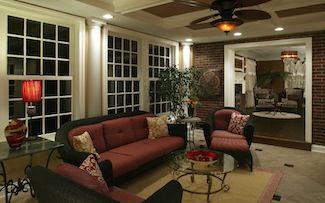As our life expectancy increases, so must our foresight. We need to plan how we want to live in our golden years. Many of us have had the responsibility of caring for our elderly parents. If you’ve experienced this firsthand, you probably became more empathetic and wish there were things you could do to ease their living situation. Fortunately, there are.
The National Association of Home Builders (NAHB), reports a large increase in consumer demand for new or remodeled homes specifically designed for the mature buyer, which it defines as homeowners 55 years of age and older. Here’s another relevant statistic to consider from the U.S. Census Bureau. By the year 2050, the elderly population is expected to double to 80 million, which means that 1 in 5 adults (20%) will be over the age of 65. I’m not a part of this demographic now, but I will be in 20 years. Speaking for myself, I can tell you about some of the changes I’ll be looking to make. And by that time, I’m sure I’ll be saying: “65 is the new 45,” right?
Aging in Place
 Aging in place (sometimes called “aging in style”) refers to the design and home remodeling segment of older homeowners who live in their own private residences, not a senior living facility. When building or remodeling homes for seniors, the first thing to consider always is quality living.
Aging in place (sometimes called “aging in style”) refers to the design and home remodeling segment of older homeowners who live in their own private residences, not a senior living facility. When building or remodeling homes for seniors, the first thing to consider always is quality living.
Once we retire, it’s typical to want to live in a home that has a smooth and open traffic flow pattern, is adaptable for multiple uses, and is energy-efficient and easy to maintain. Above all, older adults need a space that’s functional, healthy and safe. According to the American Society of Interior Designers (ASID), interior designers can choose to specifically study a track within their industry that trains them to design for aging in place. In addition, NAHB also offers a designation program to educate building and design professionals so they can help create spaces for the growing aging-in-place population. Its program is called CAPS (Certified Aging-in-Place Specialist).
We agree with the assessment from both of these organizations that the majority of seniors don’t necessarily want to slow down all that much. They want to live in homes that support their active lifestyles. However, they also have the prudence to address and plan for physiological changes that will no doubt occur over time, such as hearing and vision loss, slower reflexes and decreased flexibility.
Remodeling Guidelines
Just like any custom renovation, remodeling homes for seniors should be carefully planned after assessing the clients’ needs. For example, think of two 75-year-olds you know: one might be very active (she cares for and entertains her grandchildren a couple of days during the week, occasionally hosts Bunco night with her friends and prepares a fabulous holiday meal each Thanksgiving). Another might be on the opposite end of the spectrum (preferring a slower pace of life, she manages her chronic illness and seeks companionship and steady activities outside of the home).
Given the potential diversity of needs, I’ve put together a few general guidelines for aging in place:
Floor Plan
- Create an open floor plan that’s barrier-free and easy to navigate (no swinging doors, difficult nooks to access or flawed furniture layout).
- Don’t include steps, inclines or floor transition molding pieces.
- Provide a seamless threshold across all doorways.
- Design a space that encourages regular exercise.
Flooring
- For general areas, select slip-resistant flooring options, such as bamboo, cork or low-density carpet.
- Remove all area / throw rugs that can easily cause someone to trip and injure themselves.
- Contrast the colors throughout.
Acoustics
- Avoid high ceilings. This makes background noises difficult to control.
- Separate rooms that are noisy from those that are meant to be quite.
- Provide doorbell chimes in multiple locations.
- Provide motion-sensors so the homeowner knows when someone is approaching.
- Install flashing lights to alert the homeowner when the doorbell rings or when someone is calling on the phone.
Lighting
- Choose energy-efficient LED lighting. The energy usage is substantially reduced and the bulb life can be ten times greater than a typical incandescent; this means less exposure to an accident when changing light bulbs.
- Provide additional lighting – everywhere. Seniors need as much as three times light than younger people, so this is critical. Greater illumination is especially needed for entryways, pathways or areas that have a change in grade. Proper task lighting is essential, and perhaps the most important factor is illuminating any area surrounding steps/stairs to avoid falling.
Kitchen
- Lower wall cabinet heights; install fewer wall cabinets. Opt for storage within easy reach.
- Lower and varied countertop heights.
- Specify quieter appliances at more comfortable heights; consider an induction cooktop.
- Use lever-styled handles.
Bath
- Select a vanity with an open knee space.
- Install sensor-activated faucets.
- Choose comfort- or right-height toilets
- Choose non-skid tile (slip-resistant flooring) for the floor and shower.
- Opt for a large curbless shower with built-in antibacterial protection.
- Include a fold-down seat in the shower.
- Install adjustable, hand-held showerheads with a 6’-hose.
- Provide bracing / support in walls for grab bars, and make sure they are installed in the proper location and are the right size.
If you have more specific questions you’d like answered regarding remodeling homes for seniors, feel free to call or email me.




